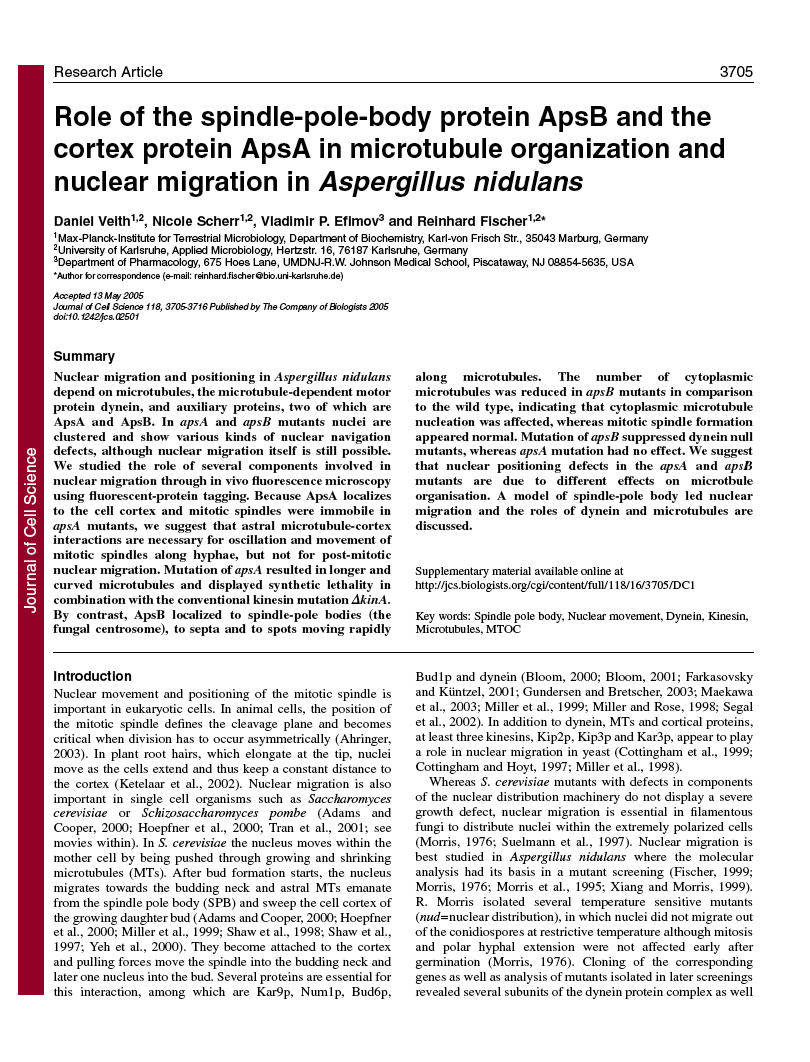Veith et al. 2005
Role of the spindle-pole body protein ApsB and the cortex protein ApsA in microtubule organization and nuclear migration in Aspergillus nidulans. J. Cell Sci., 118:3705-3716.
Veith, D., Scherr, N., Efimov, V.P. & Fischer, R
Abstract
Nuclear migration and positioning in Aspergillus nidulans depend on microtubules, the microtubule-dependent motor protein dynein, and auxiliary proteins, two of which are ApsA and ApsB. In apsA and apsB mutants nuclei are clustered and show various kinds of nuclear navigation defects, although nuclear migration itself is still possible. We studied the role of several components involved in nuclear migration through in vivo fluorescence microscopy using fluorescent-protein tagging. Because ApsA localizes to the cell cortex and mitotic spindles were immobile in apsA mutants, we suggest that astral microtubule-cortex interactions are necessary for oscillation and movement of mitotic spindles along hyphae, but not for post-mitotic nuclear migration. Mutation of apsA resulted in longer and curved microtubules and displayed synthetic lethality in combination with the conventional kinesin mutation DeltakinA. By contrast, ApsB localized to spindle-pole bodies (the fungal centrosome), to septa and to spots moving rapidly along microtubules. The number of cytoplasmic microtubules was reduced in apsB mutants in comparison to the wild type, indicating that cytoplasmic microtubule nucleation was affected, whereas mitotic spindle formation appeared normal. Mutation of apsB suppressed dynein null mutants, whereas apsA mutation had no effect. We suggest that nuclear positioning defects in the apsA and apsB mutants are due to different effects on microtbule organisation. A model of spindle-pole body led nuclear migration and the roles of dynein and microtubules are discussed.

